#Ophiuroidea
Explore tagged Tumblr posts
Text
Look at this tiny Brittle star crawling on Giant Kelp (Macrocystis pyrifera). I woke up before sunrise to catch this low tide last week
#Macrocystis pyrifera#giant kelp#brittle star#Ophiuroidea#starfish#tide pool#intertidal zone#marine biology#kelp#seaweed#tide pools#california#laguna beach
78 notes
·
View notes
Text
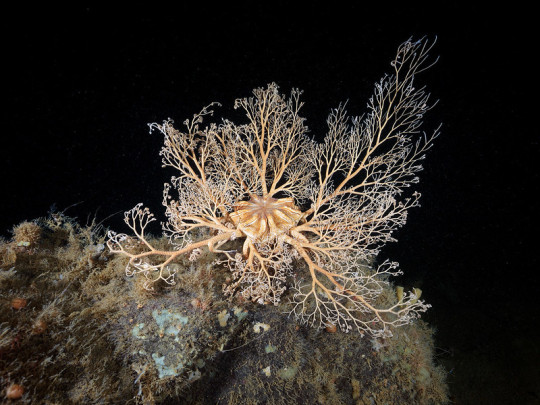
A basket star (Gorgonocephalus arcticus) in the White Sea, Russia
by Alexander Semenov
#basket stars#brittle stars#echinoderms#gorgonocephalus arcticus#gorgonocephalus#Gorgonocephalidae#Phrynophiurida#Ophiuroidea#echinodermata#wildlife: russia#wildlife: europe
123 notes
·
View notes
Text
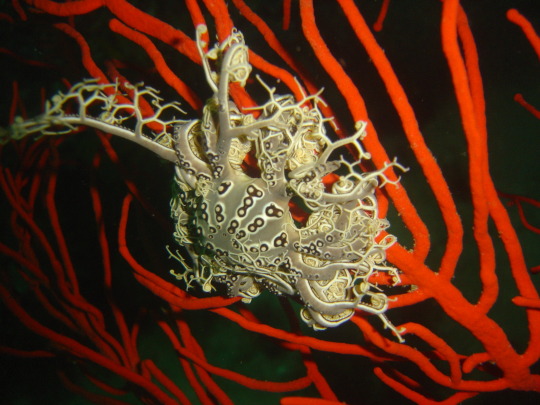
Basket star
“Basket star on sea fan, taken at the dive site Fan Reef, also known as Fantastic Reef, a small offshore rocky reef in the Castle Rocks area on the False Bay coast of the Cape Peninsula, near Cape Town in the Western Cape province of South Africa.” - via Wikimedia Commons
#basket star#Astrocladus euryale#wikipedia#wikipedia pictures#brittle star#sea star#serpent star#Gorgonocephalidae#Phrynophiurida#ophiuroids#Ophiuroidea#nature#animals#marine biology#marine biodiversity#sea fan#fan reef#fantastic reef#marine photography#photography#marine animals#ocean animals#sea animals#animal kingdom#marine life#ocean life#marine creatures#ocean creatures#sea critters#sea creatures
57 notes
·
View notes
Text
Taxonomy Tournament: Echinoderms
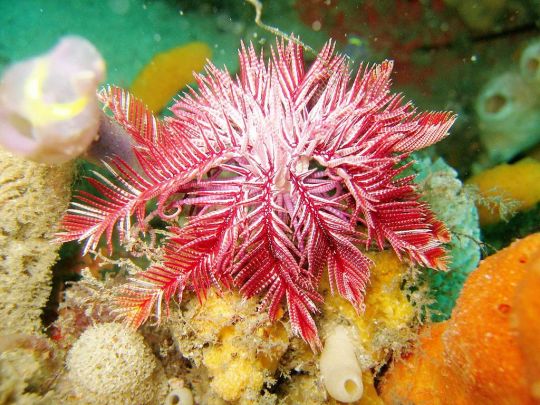
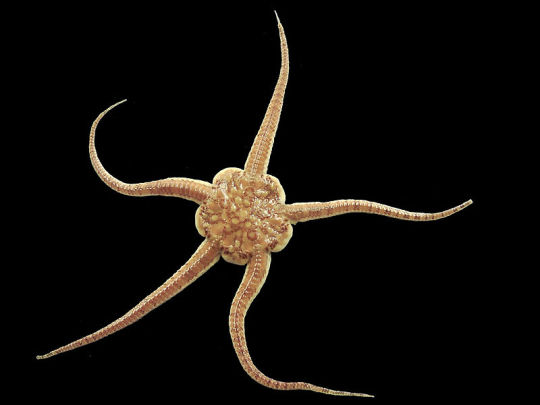
Articulata. This class is made up of sea lilies, which have a stalk an attach themselves to substrate in their adult forms, and feather stars, which are free-moving. They feed using arms with feathery pinnules.
Ophiuroidea. This class of starfish-like echoniderms, known as the brittle stars, has long slender whip-like arms
#animals#biology#polls#poll tournament#zoology#sea lilies#echinoderms#brittle stars#Articulata#Ophiuroidea#0x5v0xfa#Animal Tournament#Animal Tournament Round 1
47 notes
·
View notes
Text

Brittle sea stars, class Ophiuroidea, at Monterey Bay Aquarium
#brittle sea star#starfish#ophiuroidea#ophiuroids#sea star#monterey bay aquarium#monterey bay#nature#wildlife#nature photography#naturalist#mine#photography#ecology#north america#animals#wildlife biology#marine biology#marine biologist#ecologist#biologist#aquariums#aquatic animals#aquarium#aquatic#ocean
12 notes
·
View notes
Text

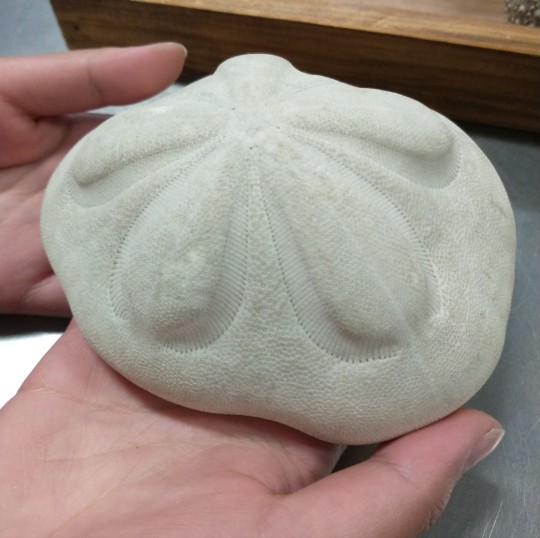

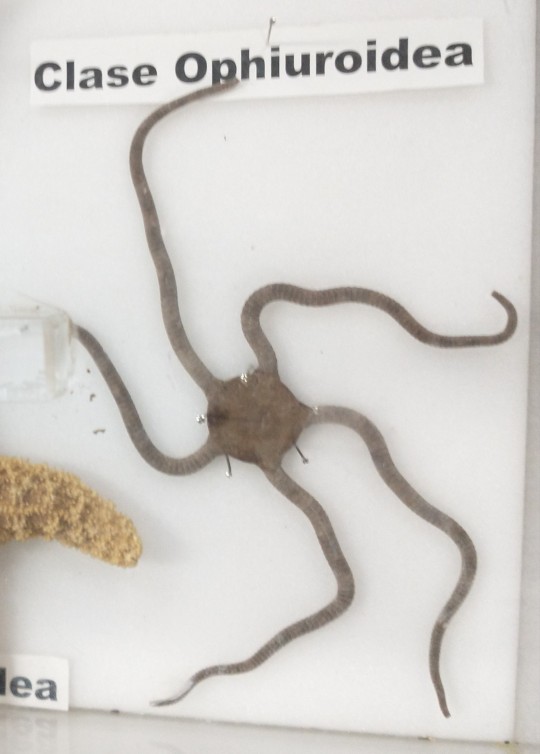
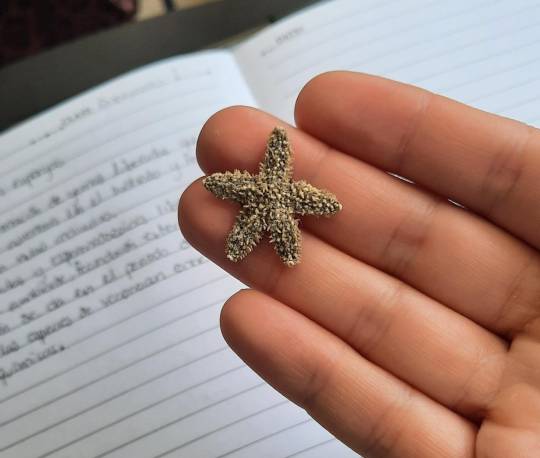
Fotos de la práctica de Equinodermos en Animales I. Me gusta este filo, aunque en laboratorio no tenían un representante de los pepinos de mar (Holothuroidea).
Dos imágenes superiores: galleta de mar y pan de muerto de mar jaja, clase Equinoidea, misma que la de los erizos de mar.
Imagen del medio: lirio de mar, clase Crinoidea.
Inferior izquierda: se parecen un poco a las estrellas de mar pero sus brazos son más alargados, clase Ophiuroidea.
Inferior derecha: las más conocidas, las estrellas de mar, clase Asteroidea. 🫧
#echinoderm#echinodermata#Asteroidea#equinoidea#ophiuroidea#crinoidea#holothuroidea#foto#pic#pics#biology#Biología#invertebrates#invertebrados
7 notes
·
View notes
Text
Cradifly, the Feather Star Pokémon!
Type: Ghost/Flying
Evolves from Carbohsian Lileep
Finally breaking away from the ocean floor, Cradiflies move in the water by paddling their feathery appendages. To traverse the oceans faster, Cradiflies have shed most of their armor in favor of a rigid skin that partially covers their mouths and makes them more aquadynamic.
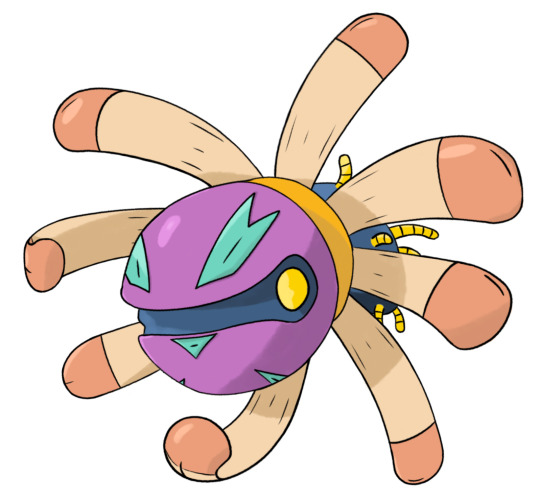
#pokemon#fakemon#carbohs#natural history#paleontology#paleoblr#paleoart#evolution#crinoid#crinoidea#cradily#feather star#ophiuroidea
4 notes
·
View notes
Text
I feel not enough people are aware of Ernst Haeckel's Artforms of Nature (Kunstformen der Natur, 1904).

Foraminifera (plate 81)

Ciliates (plate 3)

Mosses (plate 72)

Orchids (plate 74)
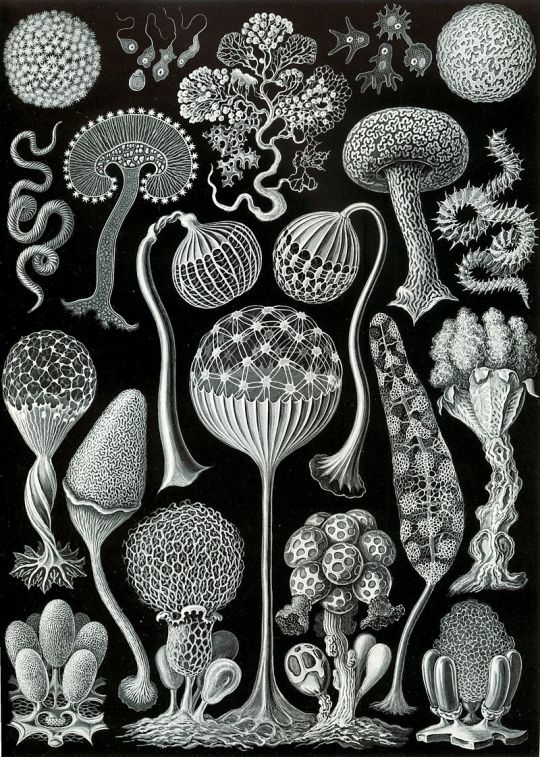
Mycetozoa (slime molds, plate 93)
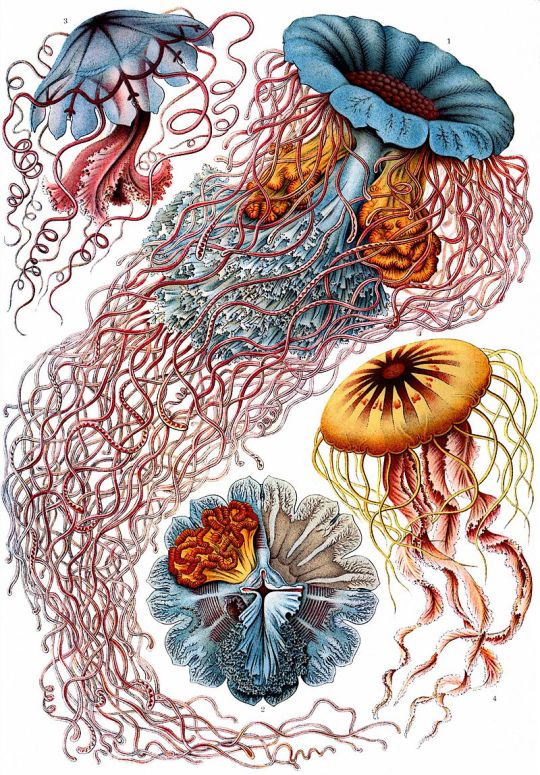
Discomedusae jellyfish (plate 8)

Siphonophorae (plate 37)

Ringed worms (plate 96)
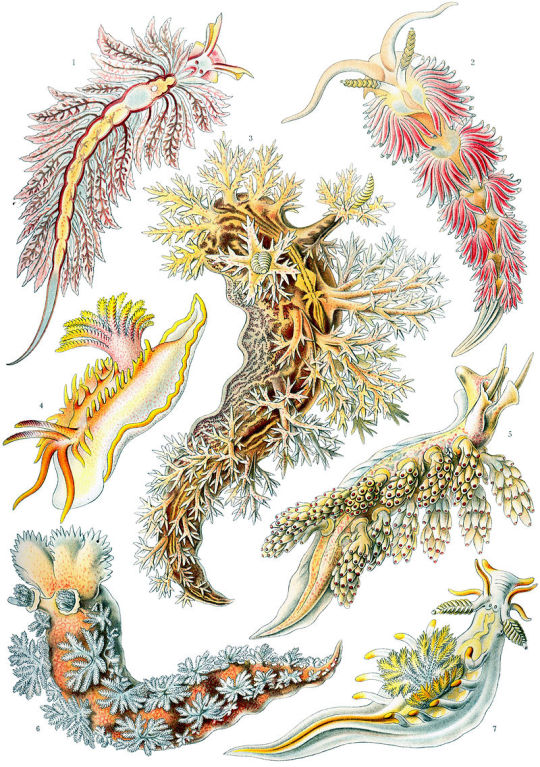
Nudibranchia sea slugs (plate 43)
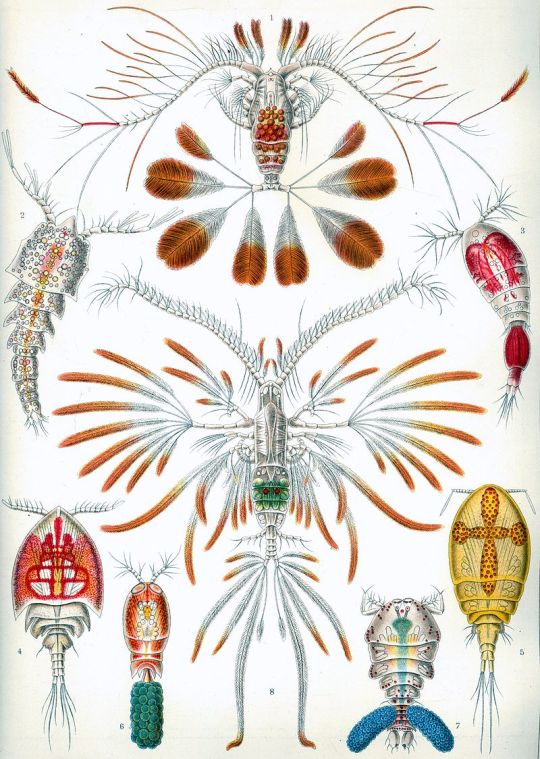
Copepods (plate 56)

Crinoidea (sea lilies, plate 20)

Ophiuroidea (brittle stars, plate 70)

Boxfish (plate 42)

Hummingbirds (plate 99)
53 notes
·
View notes
Text
Wet Beast Wednesday: brittle stars
Some animals end up living in the shadows of others. Everyone knows about starfish, the famous branching echinoderms, and a lot of people know about brittle stars, but not as many people know that brittle stars aren't starfish, they're their own thing. But because they look similar, brittle stars are frequently mistaken for a type of starfish, rather than being recognized as their own animal. I aim to help these stars shine and be recognized as their own animal.
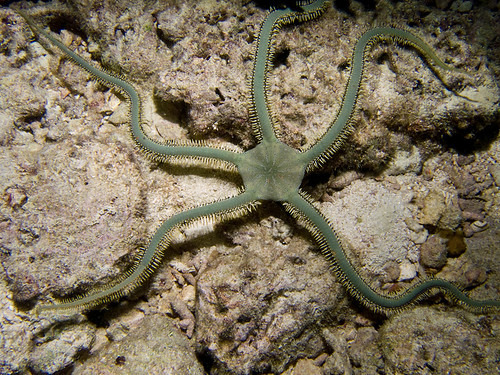
(Image ID: a green brittle star on a rock. It consists of a small, round central body with five long, slender arms arms emerging from it at equal distances from each other. Thea rams are lines on either side with small bristles. End ID)
Brittle stars are members of the class Ophiuroidea, which is closely related to Asteroidea, the true starfish. The name comes from the Greek "ophis", meaning "serpent", a reference to their long, skinny arms. Ophiuroidea is divided into two orders, Ophiurida (true brittle stars) and Euryalida (basket stars). As with all echinoderms, brittle stars are radially symmetrical, consisting of multiple body segments that radiate around a point, akin to the slices of a pizza. The majority of brittle star species have five segments, though a few have six or more. Similarly to starfish, brittle stars have their arms radiating out from a central disc. In brittle stars, all the organs are located in the disc and as long as the disc remains intact, the arms can be regrown. The mouth (which also functions as the anus) is located in the center of the disc and each body segment has a single jaw and tooth. Some starfish can regenerate into two animals if the disc is cut in half, but almost no brittle stars can survive being cut in half. That being said, some species can reproduce via fission, where the disc splits in half and each half regenerates into a fully-grown star. In brittle stars, the arms are narrower than the disc, making the disc much more visually distinct than in starfish, where it can be hard to tell where the disc ends and arm begins. The arms of a brittle star are slender and highly flexible. When in danger, a brittle star can sever one of its arms. This is usually done in response to predation, in hopes that a predator will opt to eat the arm while the star makes its escape. This is called autotomy and is the reason why the common name of these animals is brittle star. The arms are formed of multiple calcium carbonate plates called vertebral ossicles due to their resemblance to vertebrae. The ossicles are connected to each other by ball and socket joints, allowing for a great degree of flexibility. Most true brittle stars can flex their arms side to side, but not up and down, while basket stars can flex in all directions. In basket stars, the arms branch multiple times. Unlike starfish, brittle stars use their arms for locomotion. The arms move in a rowing motion to drag the star around. Some species can swim for short distances as well. By contrast, starfish (and urchins) move using tube feet. Tube feet are a common echinoderm trait and consist of small tubes with a sucker on one end that are inflated and moved with water pressure. Most echinoderms use their tube feet for movement and feeding. True brittle stars, by contrast, seem to use their tube feet primarily for sensory reception, though they are also used to help transport food to the mouth. Due to moving with their arms instead of tube feet, brittle stars are capable of much faster movement than starfish, though in short bursts. Like other echinoderms, brittle stars use a water vascular system, where water is drawn into the body and used to inflate and move the tube feet and as a substitute for blood. Brittle star reproduction is fairly standard for echinoderms. The males and females will release their gametes into the water column. Fertilized eggs develop into pluteus larvae, which swim using cilia. In the pluetus stage, echinoderms are bilaterally symmetrical. They become radially symmetrical during metamorphosis into the juvenile form.
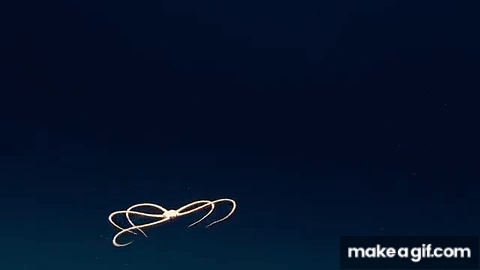
(GIF ID. A pale white brittle star swimming by rapidly moving its legs. End ID).
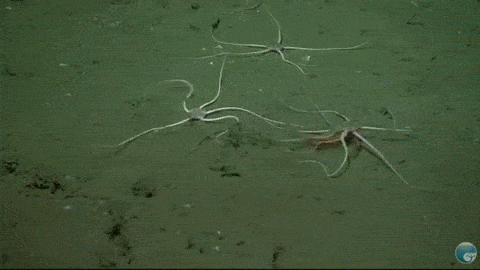
(GIF ID: two white brittle stars (with a third in the background) moving across sand by using their legs to push and drag themselves along. One appears to be carrying a red object in its mouth. End ID)
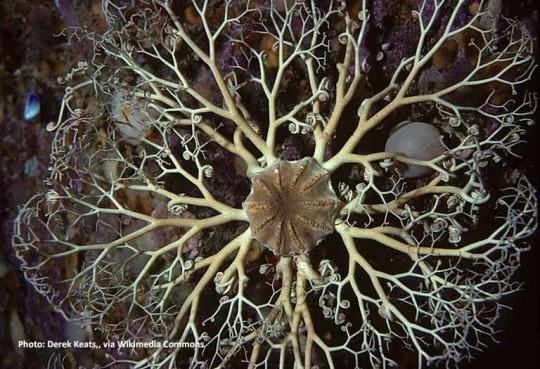
(Image ID: a basket star on a rock. The central disc in brown and has a pair of arms emerging from each segment. Each arm branches repeatedly and those branches have their own branches, resulting in a vaguely bush-like appearance. End ID)
Brittle stars are eyeless, but can detect light. Most animals, and a lot of non-animals, have some ability to detect the presence or absence of light. True vision, the ability to form images, requires more complex systems than the might-sensing cells most animals have. More specifically, it requires an eye. Or at least that's what we thought until scientists found evidence that the brittle star Ophiomastix wendtii may be able to form imaged without an eye by using its whole body as one big eye (a sea urchin, Diadema africanum) also seems to have this ability). Brittle stars are covered with light-sensing structures called opsins that can detect the presence or absence of light, but vision-forming sight requires the ability to determine how much light is coming from what direction. O. wendtii uses chromatophores to alter its color and these packets of pigment-changing cells are arranged in such a way that they may provide that directionality. In tests, O. wendtii would travel to shelter when exposed to light with a greater than change likelihood while the closely-related O. pumila would move at random when exposed to light. O. pumila lacks the types of pigment that O. wendti has, which could prevent it from being able to form the directionality needed for vision-forming sight. This is reflected in the species' behavior. O. wendtii moved toward shelter when exposed while O. pumila prefers to bury itself. The possibility for vision to exist without eyes means that a lot of animals we previously thought of as blind may actually be able to see, though probably not as well as animals with eyes.
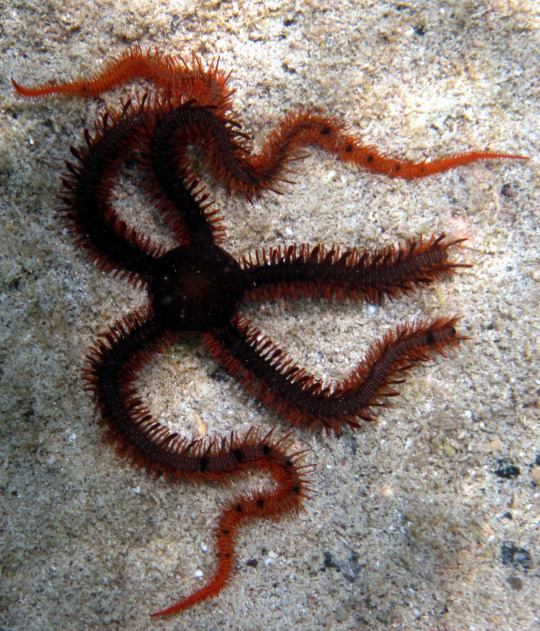
(Image ID: Ophiomastix wendtii, a red brittle star with larger bristles on its legs. Two legs are shorter and blunted, possibly having been damaged. End ID)
There are over 2,000 known species of brittle star that live all over the oceans, from shallow water to the deep sea. Most basket stars are seep-sea animals, though some shallow-water species are known. True brittle stars are mostly detritivores who crawl along sediment and eat bits of organic matter and tiny organisms. This behavior makes them seafloor engineers. Their feeding behavior stirs up the sediment, releasing nutrients and affecting the behavior of other species that rely on the sediment. Because of this, brittle stars are often highly important parts of their ecosystems. Some species follow different lifestyles. Some will target and eat sponges or coral polyps while others are active predators of small animals, filter feeders, or even omnivores that eat plant matter. Brittle stars often live in or on corals or sponges, which provide a source of protection. The relationship between star and coral or sponge may be symbiotic in some species, with the star eating parasites and pests that endanger its host. Basket stars are filter feeders that use their many branching arms to catch plankton. They need to live in places with a current as as such are often foudn on seamounts, where the underwater mountain directs the flow of water into currents. The star anchors itself to a rock, coral, or other surface and extends its arms into the current to make a net. The arms are lined with tiny hooks that catch plankton carried by the flowing water. Once caught, tube feet cover the plankton with mucus and transport it slowly to the mouth. The star will sometimes bring its arms to its mouth to speed up the process. When threatened, basket stars will bring in their legs and form a ball to protect the disc. Basket star arms are less muscular than those of true brittle stars and therefore they are not as fast. Basket stars generally get bigger than true brittle stars, with the largest species, Gorgonocephalus eucnemis, having a disc up to 14 cm (5.5 in) in diameter and an arm length of up to 70 cm (27.5 in).
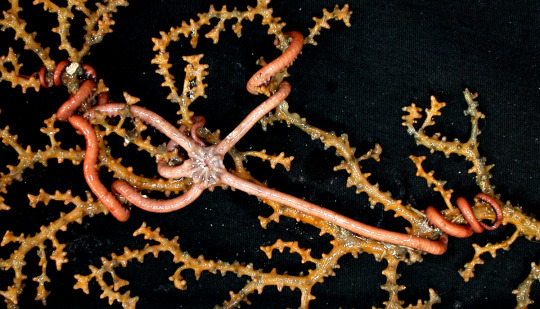
(Image ID: a pale red brittle star with no bristles on its arms. It is climbing sea fan (type of coral with appearance similar to a fern), with its arms wrapped around the coral for stability. End ID)
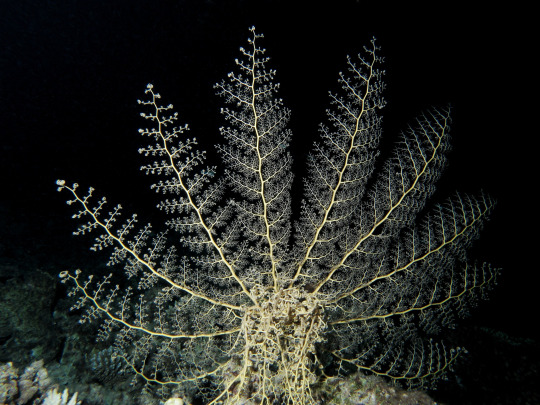
(Image ID: a basket star in feeding posture. It is on a rock with some of its arms used to support it. The rest of the arms are extended into the water column, with every branch fully extended. It looks kind of like pale white ferns. End ID).
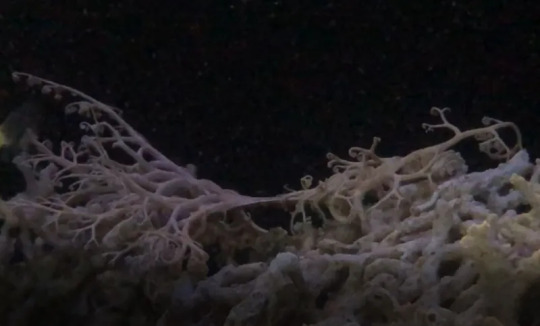
This basket star living in the St. Lucie County Aquarium in Ft. Pierce, Florida ripped itself in half shortly after being introduced to the exhibit. Esch half survived and regenerated into a full basket star. This is the only time this behavior has been seen in this species (Astrophytum muricatum). Of course, trying to rip yourself in half is a reasonable response to realizing you have to live in Florida.
(Image ID: a white basket star splitting into two halves, each with a portion of the arms. The only thing connecting the halves is a small strip of tissue. End ID)
#wet beast wednesday#brittle stars#basket stars#echinoderm#marine biology#marine life#animal facts#zoology#biology#ecology#pictures#image described
188 notes
·
View notes
Text
I was barely able to get my phone out in time to record this Brittle Star (not yet sure of the specific species, but the class is Ophiuroidea). We were running away from the tide coming in; our dry path to return from a hard-to-reach area was becoming submerged so we were all kind of panicked but the movement of the Brittle Star caught my eye
41 notes
·
View notes
Text
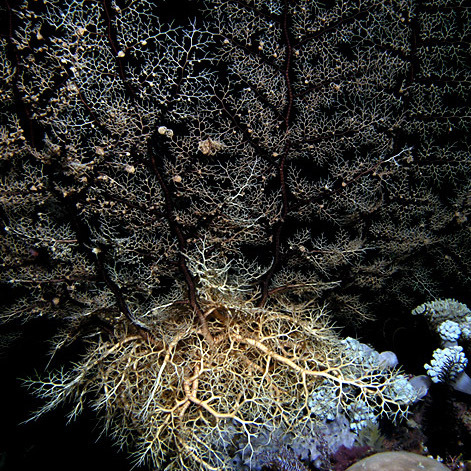
A basket star (Astroboa granulatus) unfurling at night to feed on plankton in East Timor
by Nick Hobgood
#basket stars#brittle stars#echinoderms#astroboa granulatus#astroboa#Gorgonocephalidae#Phrynophiurida#Ophiuroidea#echinodermata#wildlife: east timor#wildlife: asia
150 notes
·
View notes
Text
Smooth star moves 🌟
These brittle stars are mud-loving animals, often found crawling across the muddy plains of the seafloor. This group of sea stars, known as Ophiuroidea, boasts a diverse number of species—more than 2,000 different species! They feast on a variety of prey including food particles suspended in the water, organic particles that settle on the seafloor, or small animals like crustaceans, and live in a wide range of water depths—from the shoreline down to 3,000 meters (9,840 feet).
92 notes
·
View notes
Text
Ophiuroidea, you been on my mind girl brittle stars
8 notes
·
View notes
Text
3 notes
·
View notes
Text
Ophiuroidea nope
a wizard is going to turn you into a random animal! whether you like it or not! how nice of them! spin the wheel to find out which class your new species belongs to (and then probably do a google).
27K notes
·
View notes
Photo

Fossil Brittle Star (Furcaster) – Ordovician Marine Fossil from Draa Valley, Morocco – w/ COA
Own a captivating piece of ancient marine history with this beautifully preserved Fossil Brittle Star (Furcaster) from the Ordovician period, unearthed in the fossil-rich beds of the Draa Valley, Morocco. This authentic specimen is over 450 million years old and offers a rare glimpse into one of Earth’s earliest marine ecosystems.
Furcaster is an extinct genus of Ophiuroidea, commonly known as brittle stars—echinoderms related to modern-day starfish. These marine invertebrates are characterized by a central disc and five long, slender, flexible arms. This fossil clearly captures the creature’s delicate structure and radiating symmetry, making it ideal for collectors, educators, and enthusiasts of paleontology.
The Draa Valley is globally recognized for its exceptionally preserved Paleozoic fossils. Its Ordovician-aged sedimentary layers are among the most important in North Africa for revealing early marine biodiversity. Fossils from this region are treasured for their completeness and clarity.
This is a carefully selected, one-of-a-kind fossil, and the exact specimen shown in the listing photos is the one you will receive. A 1cm scale cube or rule squares is included in the images to provide accurate sizing—please check the photos for full dimensions.
Each fossil comes with a Certificate of Authenticity, verifying that it is 100% genuine and ethically sourced.
Why Choose This Fossil? ✔️ Authentic Furcaster Brittle Star Fossil from Draa Valley, Morocco
✔️ Ordovician Period – Approx. 450 Million Years Old
✔️ Exceptional Preservation – Clear Echinoderm Features
✔️ Ideal for Collectors, Display, and Educational Use
✔️ 100% Genuine with Certificate of Authenticity
✔️ Exact Specimen Shown – No Substitutes
✔️ Fast & Secure Shipping
Bring prehistoric ocean life into your collection with this stunning Furcaster Fossil Brittle Star—order today!
#Furcaster Fossil#Brittle Star Fossil#Fossil Echinoderm#Ordovician Fossil#Draa Valley Fossil#Morocco Fossil#Paleozoic Marine Fossil#Fossil Starfish#Fossil Ophiuroidea#Fossil Collector Item#Natural History Fossil#Geological Specimen#Fossil Slab#Marine Fossil Morocco#Certified Fossil#Fossil for Display#Genuine Fossil Specimen
1 note
·
View note